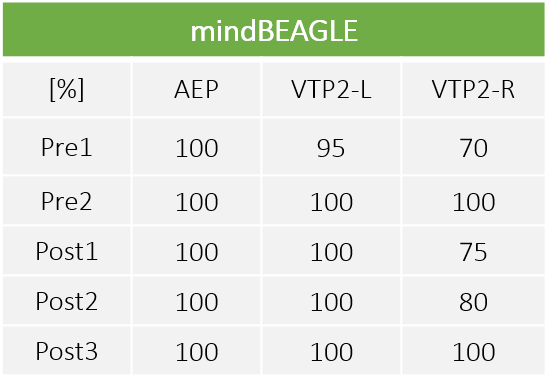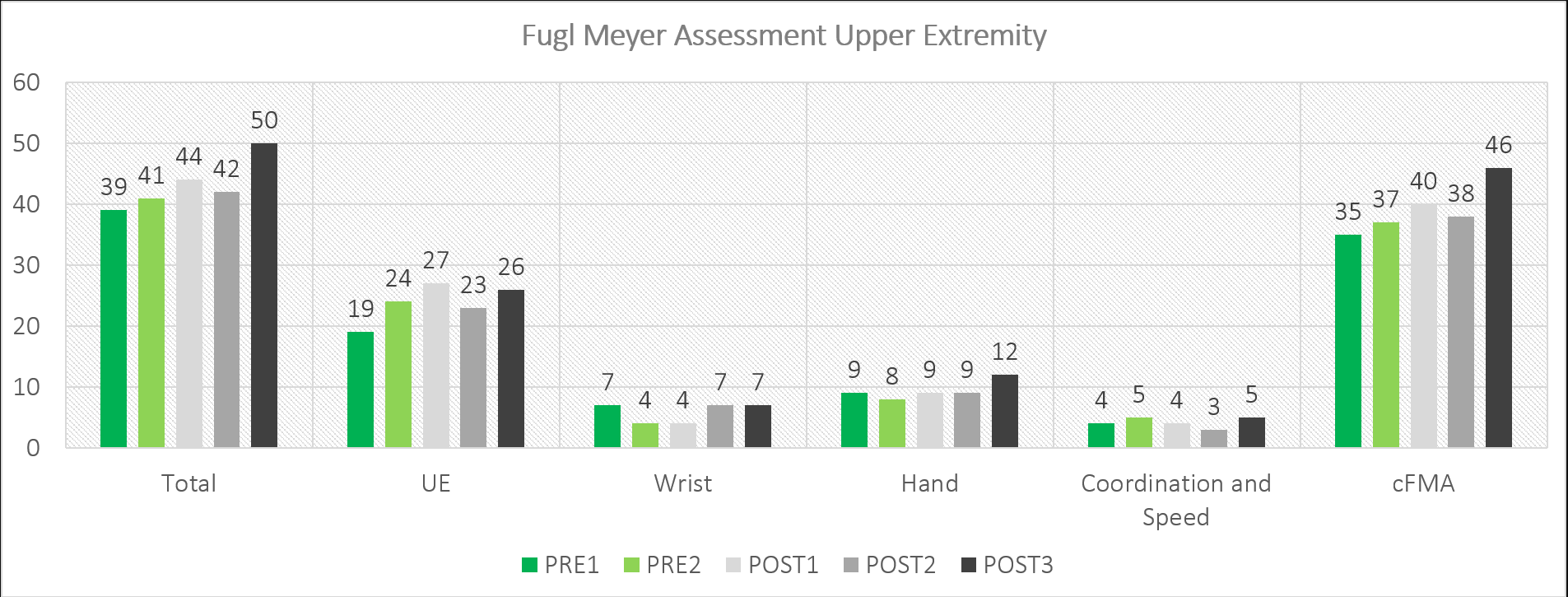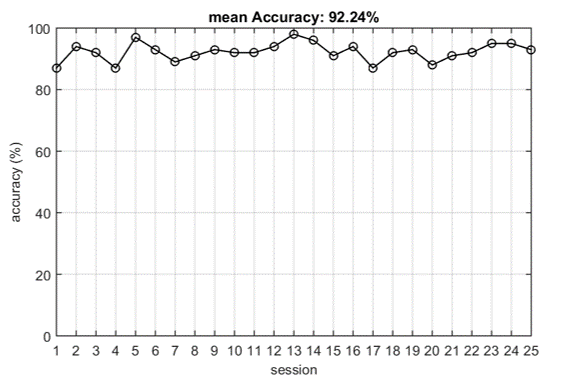
Anita Rebernik had a stroke 24 years ago when she was 27 years old. The stroke affected here left side. Read the interview with Christoph Guger who explains the patient’s improvements and the importance of a high accuracy during recoverix therapy.
Sarah Breinbauer: How were her functional scales before the recoveriX therapy?
Christoph Guger: “Mrs. Rebernik had a Fugl-Meyer Scale for Upper Extremities of 39 points out of 66. The upper extremity function had 19 points, the wrist 7 points, hand function had 9 points and coordination and speed had 4 points. The lower limb Fugl-Meyer Scale was 26 before the therapy.”
Sarah Breinbauer: recoveriX is only instructing the patient to imagine left and right hand dorsiflexion, then it stimulates the muscles with a functional electrical stimulator and shows the left and right hand movement in form of an avatar. Why do you also make the Fugl-Meyer Score for Lower Extremities.
Christoph Guger: “Patients are also showing improvements of lower limb functions, while we are only treating upper limbs. But the left and right hand movement imagination activates both hemispheres and the foot region is exactly between the left and right sensorimotor cortex.”
Video: Interview with Mrs. Rebernik during recoveriX therapy
Sarah Breinbauer: How was the recoveriX therapy done?
Christoph Guger: “Mrs. Rebernik did the usual 25 recoveriX sessions each lasting 40 min training time. She reached in the first session about 85% classification accuracy which shows that she was motivated and doing the task correctly. Her grand average accuracy was 92.2% for all the 25 sessions. This is a very important results because we know from our group study that patients that have an accuracy above 80% improve on average in 8 points in Fugl-Meyer Score.”
Sarah Breinbauer: Did you also see differences in the EEG patterns after the 25 sessions?
Christoph Guger: “Her event-related desynchronization maps show more activation on the right side. The right side of the brain is responsible for the control of the left hand that was affected by the stroke. We found more activation in the alpha and beta range of the EEG and a faster onset of the event-related desynchronization. These parameters objectively show that the brain learned to perform the left and hand movement imagination correctly and that the speed was improved.”
Sarah Breinbauer: Are you looking also at other EEG parameters beside the event-related desynchronization?
Christoph Guger: “We are also using our mindBEAGLE system before and after the therapy. The mindBEAGLE system is a brain-computer interface system that allows to assess brain functions. We are running auditory P300 (AEP), vibro-tactile P300 (VTP) and motor imagery (MI) experiments. The P300 is an EEG marker for attention and each tests needs between 2.5 min to 8 min of time. We are also using the BCI classification accuracy as parameter of how good a patient can do the task. In her case the auditory P300 paradigm reached 100% which shows that the patient has attention and can discriminate low from high tones. The vibro-tactile P300 assessment also showed 100% accuracy which show that the patient’s brain is able to concentrate on stimuli of the right or left hand correctly.”

 Figure: mindBEAGLE Assessment with Mrs Rebernik showing virbo-tactile P300 improvement for left and right hand stimulation after recoveriX therapy.
Figure: mindBEAGLE Assessment with Mrs Rebernik showing virbo-tactile P300 improvement for left and right hand stimulation after recoveriX therapy.
Sarah Breinbauer: How was the final outcome for Mrs. Rebernik?
Christoph Guger: “Mrs. Rebernik improved her total Fugl-Meyer Scale by 11 points to 50 in total. The upper extremity function improved by 7 points to 26. Wrist function stayed constant, hand function improved by 3 points to 12 and coordination and speed improved by 1 point to 5. The lower limb Fugl-Meyer Score improved by 3 points to 29. Beside that the patient improved also her Barthel index to the maximum of 100 points and reduced the Fahn Tremor scale from 5 to 2 which is a very nice result.”

Figure: Fugl-Meyer Assessment of Lower Extremity of Mrs. Rebernik



